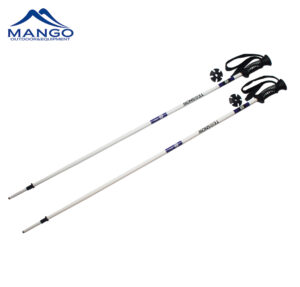When hitting the slopes for a day of skiing, it’s not just your skis and boots that matter. Ski poles play a crucial role in your skiing experience, helping with balance, propulsion, and control. Choosing the right ski pole is essential for enhancing your performance and safety on the mountain. In this guide, we’ll explore the key factors to consider when selecting the perfect ski pole for your needs.
1. Determine Your Skiing Style
Before you start shopping for ski poles, it’s important to understand your skiing style and preferences. Different types of skiing, such as alpine, freestyle, backcountry, and cross-country, have specific requirements for ski pole design. Identify your skiing style to narrow down your options.
2. Select the Right Material
Ski poles are made from various materials, each offering different advantages:
Aluminum: Aluminum poles are durable and affordable, making them a popular choice for many skiers. They are suitable for all types of skiing and provide good strength and flexibility.
Carbon Fiber: Carbon fiber ski poles are lightweight and offer excellent stiffness. They are ideal for advanced skiers looking for maximum performance. However, they can be more expensive.
Composite: Composite ski poles are a blend of materials and often strike a balance between weight, durability, and cost. They are suitable for intermediate skiers.
3. Find the Right Length
The length of your ski poles is crucial for proper skiing posture and control. Here’s how to determine the correct length:
Alpine Skiing: Stand with your ski boots on and hold the ski poles upside down. Your elbows should form a 90-degree angle when holding the pole grips just above the baskets.
Backcountry Skiing: For backcountry skiing, you might want slightly longer poles to help with uphill trekking. You can also consider adjustable-length poles.
Cross-Country Skiing: Cross-country ski poles are typically longer, with the length depending on your skiing technique and preferences.
4. Choose the Right Grip and Strap
The grip and strap design can significantly impact your comfort and control while skiing. Look for grips that fit comfortably in your hands and provide a secure hold. Adjustable straps are essential for maintaining control and preventing the loss of poles in case of a fall.
5. Consider Basket Size
The baskets at the bottom of ski poles serve to prevent the poles from sinking too deeply into the snow. Larger baskets are suitable for deep powder conditions, while smaller ones work well on groomed trails. Some poles come with interchangeable baskets to adapt to different skiing conditions.
6. Test and Try On
It’s important to physically try on and test ski poles before making a purchase. Visit a ski shop and hold the poles, checking for comfort, grip, and the right length. Make sure they feel balanced and suit your skiing style.
Conclusion
Choosing the right ski pole is essential for enhancing your skiing experience. By considering your skiing style, selecting the right material, finding the appropriate length, choosing the right grip and strap, and considering basket size, you can ensure that your ski poles are a valuable addition to your skiing gear. Remember that comfort and control are key, so don’t rush the selection process. A well-chosen ski pole will help you enjoy the slopes to the fullest while maintaining safety and control.

